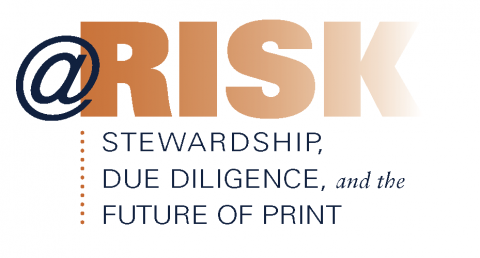On June 23, 2017 CRL convened Expanding the Shared Collections Network: A CRL Forum, as a venue for community input on CRL’s shared print agenda. Since partnerships are a key element of that agenda, we used the Forum to learn what will be most important to CRL libraries in such partnerships. Here are the important points that emerged in the discussions:
Access
- In expanding the CRL shared print serial collections, providing access as well as preservation will be essential. The shared collections should be “accessible and curated” and “discoverability and easy access will be critical to faculty buy-in”.
- “Access can mean many things.” While ILL and document delivery are routinely provided by most libraries, some form of enhanced access will have to be a baseline requirement for CRL shared print to satisfy researchers.
- Access to CRL shared collections currently involves loan of extended runs of journals, scanning of materials on request, and programmatic digitization. Providing those services will be a high bar for shared print partners, and will require CRL to provide incentives
- “Curation matters to collections managers; redundancy matters more to library directors and to scholars.” A curatorial approach to print sharing, i.e., actively improving holdings, through gap-filling and continuation, and strategic digitization would increase the value and sustainability of the shared print effort, and could reduce the need for redundant holdings. Like enhanced access it would also have a cost.
Cooperation and Data
- Given the magnitude of the print serials corpus, CRL must cooperate and align its own shared collections effort with those of other U.S. and Canadian libraries committed to preserving print. CRL should focus on its established collection strengths and enlist other shared print efforts to expand its preservation footprint.
- “Libraries of record” will play an essential role. Many major libraries are committed to maintaining deep holdings of legacy print serials, and those holdings figure in the calculus on what to retain and what to withdraw. Essentially, “Those libraries are part of the existing safety net.”
- Unfortunately, confidence in the accuracy and currency of existing bibliographic and holdings records for print serials is low. Records currently available locally and in WorldCat are “not up to the task.” Many do not indicate gaps or lack unique identifiers, for example. “The cost of good holdings and bibliographic data is high and our holdings records aren't ready.”
- WorldCat and the PAPR database can serve as the foundation for the more robust tools and data needed to support print sharing. Working together CRL and OCLC should improve the data and resources and integrate the “metadata pieces” needed for informed library decision-making and collection management.
What Does This Suggest for CRL?
On August 30, CRL’s Collections and Services Policy Committee met by phone to discuss the Forum input. Committee members agreed that CRL, working with the major research “libraries of record” and shared print programs in the U.S. and Canada, should create a “roadmap” that reconciles the shared print agenda promulgated by CRL in 2016 with the strategies and goals of those other initiatives.
Given the real and increasing pressure on libraries, the roadmap might involve a two-track approach: 1) quickly put in place a “light-weight” safety net to enable near-term withdrawal of widely held print serials; and 2) form robust partnerships for long-term curation and accessibility of endangered and less widely-held materials at scale. This approach is analogous to the national monograph strategy, led by Jisc, now emerging in the U.K.
In moving forward, CRL will give priority to achieving synergies with efforts in which CRL libraries are invested. Meeting CRL requirements will have a cost for new partner organizations, and CRL will therefore have to provide incentives, perhaps through in-kind services, monetary compensation, or a reduction in the CRL cost share of libraries contributing services.
CRL will work with U.S. and U.S. and Canadian initiatives to map specific areas for joint action. To that end CRL is co-sponsoring, with the Canadian Association of Research Libraries (CARL/ABRC), Library and Archives Canada, and the University of Toronto Libraries @Risk North, Collections en péril, a conference on November 10 to examine the potential for strategic cooperation among Canadian shared print efforts, and for linkages between those efforts and U.S. initiatives. More details are at: http://www.carl-abrc.ca/mini-site-page/at-risk-north/
More to come as events unfold.
Bernard F. Reilly
President (2001-2019)
Center for Research Libraries
